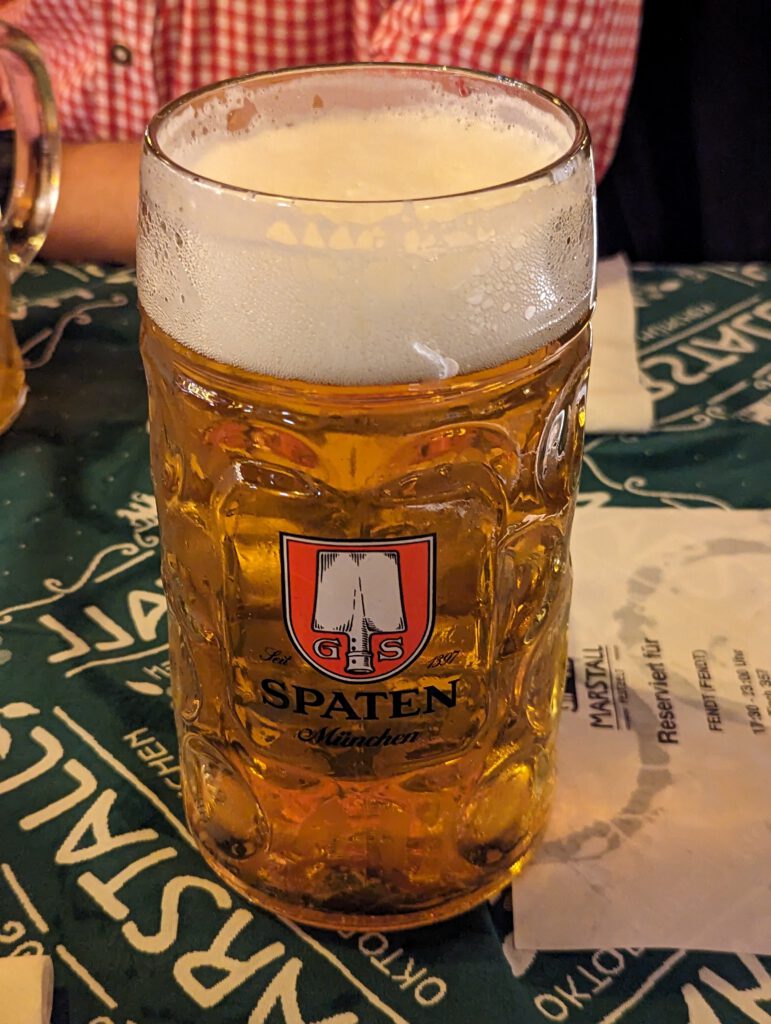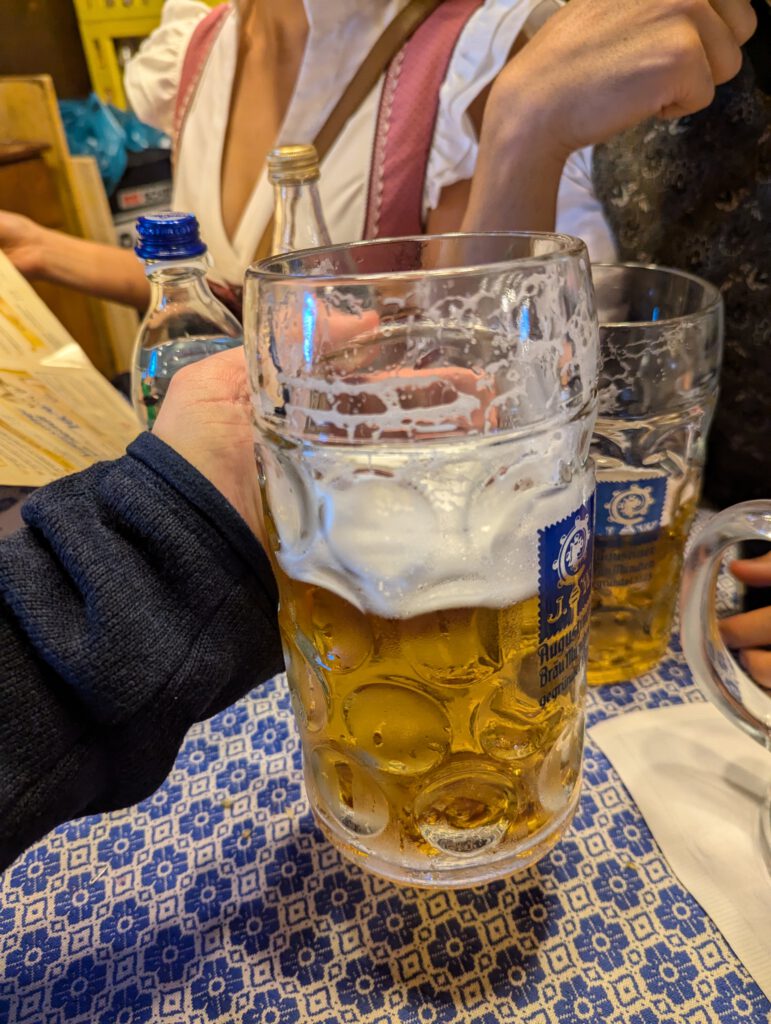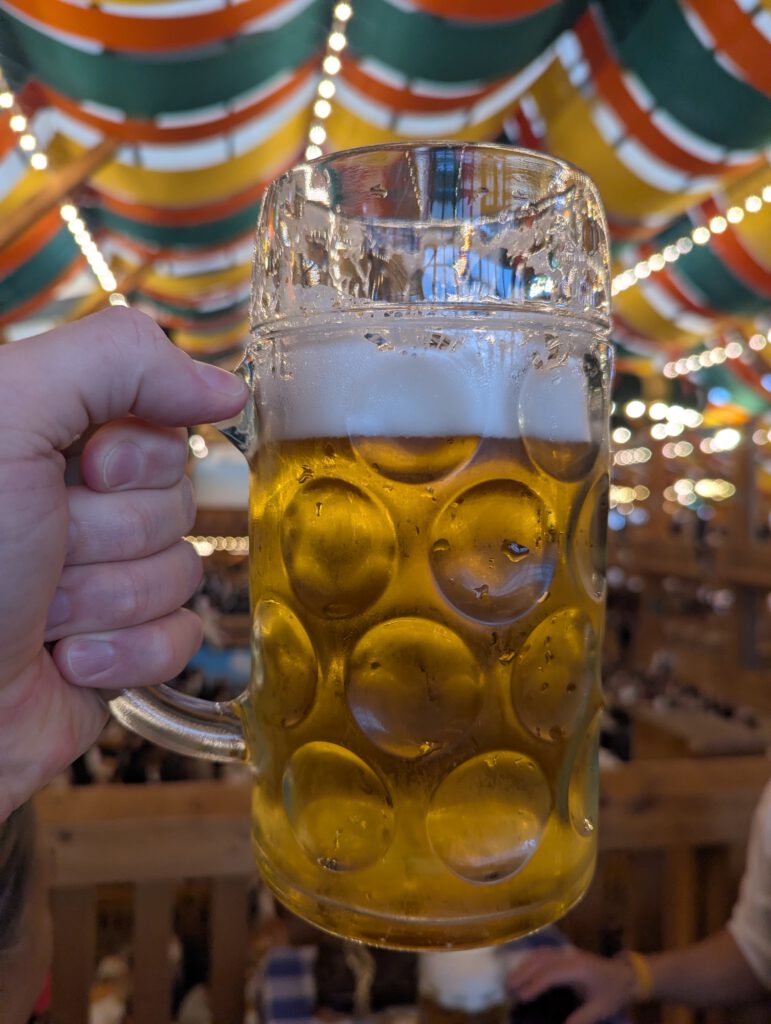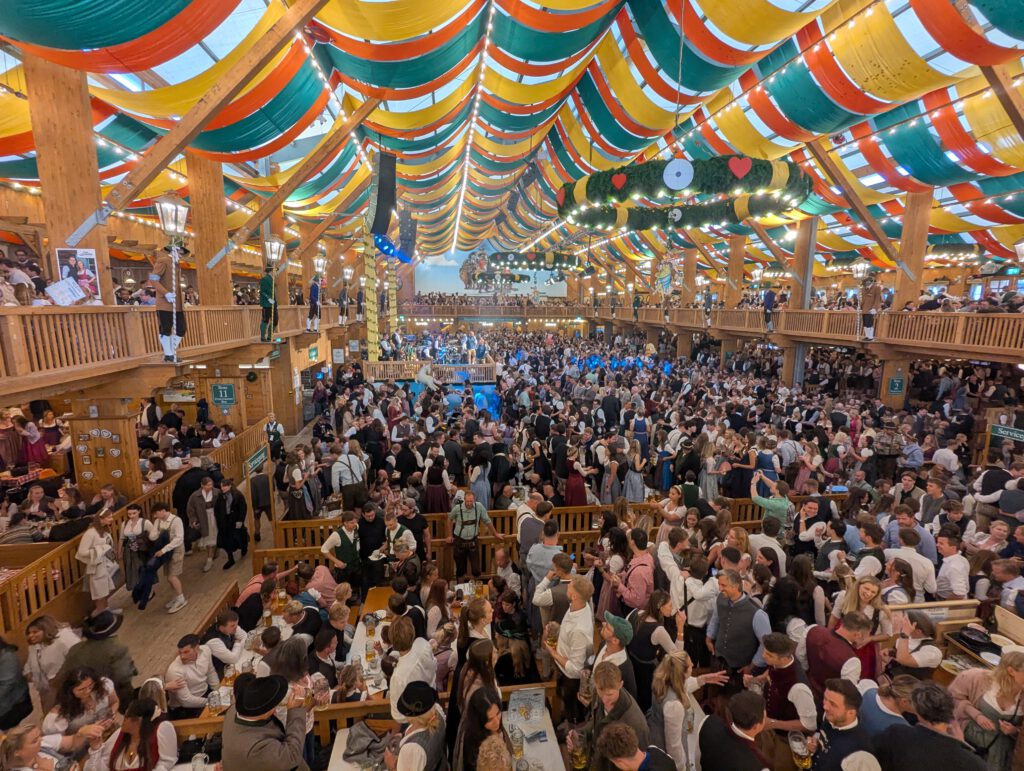Working for a Munich-based startup (though in my case, remotely from Berlin) comes with a few perks. One, travelling to Munich a few times a year for work, two, going to Oktoberfest with my work colleagues because that’s apparently what any respectable Munich company is meant to do.
2025 has been my third Oktoberfest in a row now, each year in a different tent serving a different beer brand, in particular Marstall Zelt (Spaten), Augustiner Festhalle (Augustiner) and Schützen-Festzelt (Löwenbräu). While I don’t have a comprehensive overview over all the beer brands, 3 different beers are still half of them.

Last year, in the weeks before Oktoberfest, I actually attended a guided Oktoberfest beer tasting, where I was able to try out all six beers (Augustiner, Spaten, Löwenbräu, Paulaner, Hacker-Pschorr, Hofbräuhaus) side by side. In previous years, I did similar taste tests together with my wife Louise and my friend Ben. In these tastings, there were always stark differences, and they weren’t always identical. Two years ago for example, I thought Löwenbräu was fairly good, and ranked it third on my list, while last year, it tasted really bad and I ranked it last. So let’s just say, I have opinions.
Every time I went to Oktoberfest, I had certain expectations about the beer quality, not just connected to my personal prejudice (let’s face it, everyone is somewhat prejudiced about major beer brands) and brand perception, but also informed by previous tastings. But every time, these expectations were shattered.
Spaten at Marstall? Excellent. Cool, fresh, not underpoured, and tasting great.
Augustiner at Augustiner Festhalle? Exactly as I expected and knew it.
Most recently, Löwenbräu at Schützen-Festzelt? Whoa. Fresh, dry, crisp, entirely unlike what I had experienced in previous years.

When I came home after Oktoberfest, I actually went back into our beer fridge and tried a can of Löwenbräu Oktoberfestbier. And… it was not the same. It was solid, but nowhere near as good as just a few days before. And it tasted quite different from the Paulaner Oktoberfestbier (also from can) that I had afterwards, and also quite different from the bottled Oktoberfestbier I had had just a few days before.
But thinking back about all the Oktoberfestbier at Oktoberfest over the years, I don’t think I have would been able to distinguish them at all, unlike the ones at the beer tastings. The difference being of course that in all the taste tests, the beers under test were always from bottle or can, while at Oktoberfest, it’s always poured from tap, either as tank beer (for most brands) or from large 200 litre wooden casks (Augustiner only), the taps barely ever close, and the beer is properly cold (which probably doesn’t exactly help with tasting finer details in the beer).
So does the difference in beer at Oktoberfest even matter? To me, it doesn’t seem to, because I honestly don’t think I could taste the difference between Spaten, Löwenbräu and Augustiner. Is the preference of draught Oktoberfest beer at the festival itself just brand loyalty, and has nothing to do with the actual taste? To me, it seems like that at the moment, and it’s not just because people (including me) just get hammered and then nothing else matters. In fact, I never actually got drunk at any of my Oktoberfest visits because I like to pace myself by also drinking Radler and/or alcohol-free beer.

And the latter is what actually matters in brand differentiation: at Marstall in 2023, they only had Radler as low-alcohol beery option, at Augustiner last year, they had their then new alcohol-free Helles on draught (which is otherwise only available in bottles, even in Augustiner restaurants and beer halls in Munich, so they must have been really sure about shifting a lot without developing microbiological issues in the draught system) which was excellent, and this year, the Schützen-Festzelt only had Löwenbräu’s alcohol-free beer which was a sugary, worty mess that I couldn’t even finish.
So at least for me, while the Oktoberfestbier brand doesn’t seem to matter, it does matter if you want to drink something other than the regular Festbier and explore some of the other options, like the non-alcoholic beers for pacing purposes.



The consistency of Oktoberfest beers from year to year in small pack isn’t great. I’ve not had too many of them in the past few years, but a friend who still lives in Munich reviews them all every year, and if I could find all his posts, it seems the top three are always different.
There’s a lot more variables that will affect small pack, whereas those at the big event should be very consistent.